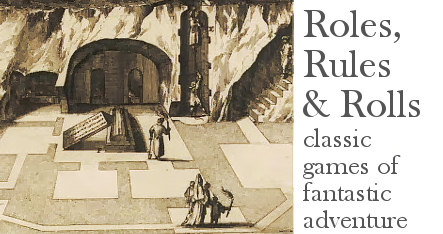Revisiting my musings on the D&D concept of alignment ten years ago, I stand by the observation that conceptually, it's a mess. Is alignment:
* A force that guides great destinies, setting mortals and monsters at opposite ends of the cosmic chess board?
* A political ethos that rules the morals of states and societies, and those who follow them?
* A style that shines through in the tactics and personality of individuals?
I made these observations about the Law vs. Chaos dimension, originally. But on reflection, they also apply to Good vs. Evil. I missed that originally because people in Western culture, raised on Western stories, will believe that good and evil nature goes through and through. Good people live in good realms and follow good faiths of good gods. Evil people likewise stick to their zone. But storybook morality falls apart in the real world. Cruel and power-seeking worldly systems can and do serve noble ideological goals. A society supposedly dedicated to tearing down the universe can sweeten its appeal to the outcast by giving them kindness and understanding. Kind and power-hungry individuals can each find their place within those systems.
But storybook morality falls apart in the real world. Cruel and power-seeking worldly systems can and do serve noble ideological goals. A society supposedly dedicated to tearing down the universe can sweeten its appeal to the outcast by giving them kindness and understanding. Kind and power-hungry individuals can each find their place within those systems.
Yes, the three levels on the average reinforce each other. But the really interesting cases are those where the morality of ultimate ends, worldly means, and individual character fall out of ... alignment.
Think of a repurposing of the I Ching hexagrams, not a system to define characters, but a way to generate possibilities. The first three are the three levels of GOOD --- and EVIL - - : cosmic ends, worldly means, and personal character. The second three do this for LAW --- and CHAOS - -.
Using a site such as this one we first get:
- - EVIL END
--- GOOD MEANS
--- GOOD PERSON
--- LAWFUL END
--- LAWFUL MEANS
- - CHAOTIC PERSON
Here's someone who, like most in their society, upholds a cosmic order where the strong rule and everyone knows their place. Although the gods of this order are cruel, the church and state who serve them are set up to cushion the blows as much as possible, seeing the diabolic as the only effective bulwark against forces that would utterly wreck the world. Despite their strictness in rule, the powers that be find it expedient to hire less constrained agents. Such a one is our hero, who believes in rules -- for other people -- but is otherwise good-willed and magnanimous.
--- GOOD END
- - EVIL MEANS
--- GOOD PERSON
- - CHAOTIC END
--- LAWFUL MEANS
- - CHAOTIC PERSON
Here is a harsh contradiction -- a lawful evil social order served by a chaotic good person while the order itself serves a chaotic good metaphysical cause. Can anyone believe in all three layers simultaneously? Does this example break down and force us back into the seamless view of alignment?
No, not necessarily. Consider, through the dark arts of social psychology, the many ways in which people deftly reduce the cognitive dissonance from incompatible elements of their belief system. The ease with which people go from hugging their dog to dining on pork, or the ways belief systems put qualifications around "respct for human life", prove that excuses and rationalizations are everywhere.
We can put all of them to use in our example.
- Means-end separation. The dictator is only taking charge to preserve the dream of freedom and benevolence! When its enemies vanish then the true end state will be possible! (But the enemies never vanish, do they...)
- Denial of responsibility. The system is too big to change, I can try to make it better from within, if I didn't do this someone worse would.
- Advantageous comparison. Say what you will about our kingdom, over there they have it much worse!
- Euphemistic labeling. Come with me to the Cells of Liberation where the truth will be extracted from you in the Palace of Joy.
- Selective moral concern. Oh yes, it may seem that we are mean and oppressive, but only to subhumans / criminals / malcontents who deserve it. To our loyal people we are liberal and fair!
- Straightforward fingers-in-ears denial. What? Nonsense! We don't torture people. I don't know what you're talking about. Those are all lies spread by our enemies.
None of these excuses are ironclad, and each of them can be toppled over time. Then you have personal evolution or a social revolution. But the fall of a tower of mutually reinforcing rationalizations should never be taken for granted. Its tensions and dynamics contain the seeds of situations much more intriguing than the storybook goodie/baddie distinctions that alignment by-the-book encourages.
Next and finally: Everyday morality and alignment.


